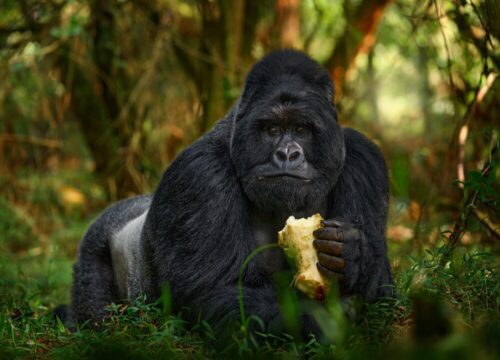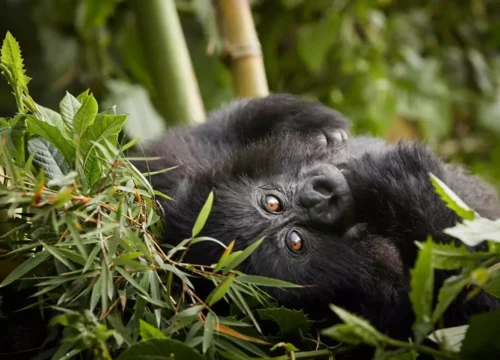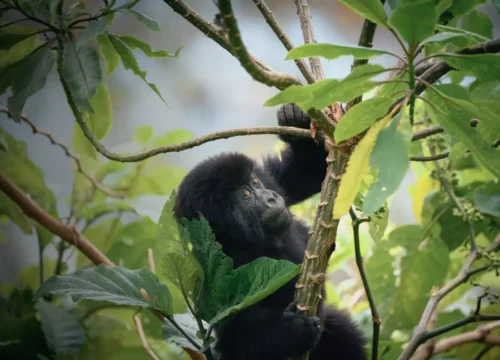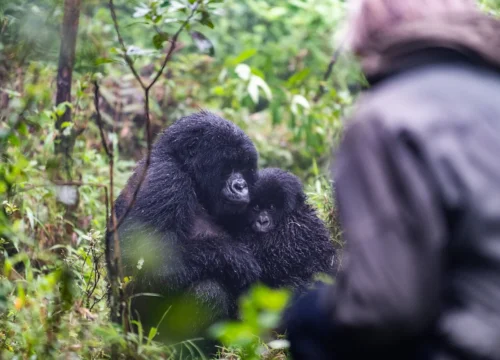Serengeti National Park Safari Guide: Wildlife, Migration, Tours & How to Visit Tanzania’s Iconic Wilderness
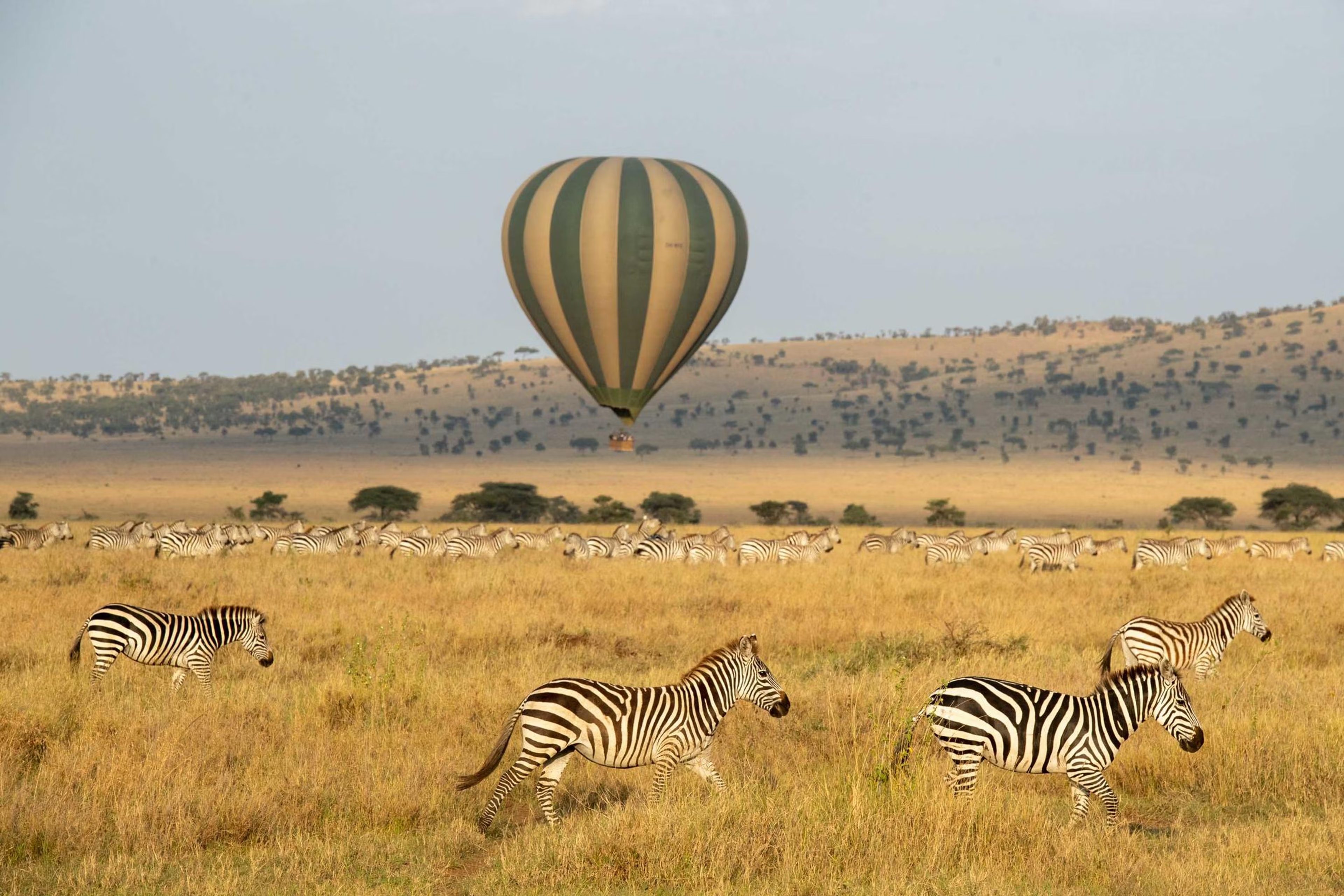
Table of Contents
Serengeti National Park is not just the most iconic safari destination in Tanzania, it is the very heart of African wildlife tourism. Spanning over 14,750 square kilometers of vast savannah, acacia-dotted plains, riverine forests, and rocky outcrops known as kopjes, Serengeti National Park is where nature’s raw beauty and thrilling wildlife encounters unfold every single day. The name Serengeti is derived from the Maasai word Siringet, which translates to “the land that runs forever,” a fitting description for this boundless wilderness where lions rule, elephants roam, and the Great Migration paints the landscape with life.
What makes Serengeti National Park extraordinary is not just its sheer size, but the density and diversity of wildlife it supports. This is the land of the legendary Big Five — lion, leopard, elephant, buffalo, and rhino — but also home to cheetahs, giraffes, hyenas, hippos, crocodiles, and over 500 bird species. The predator-prey interaction here is unmatched anywhere in the world, offering dramatic wildlife scenes that have inspired countless documentaries.
At the heart of Serengeti National Park lies one of the most awe-inspiring wildlife spectacles on Earth — the Great Migration. Every year, over two million wildebeest, zebras, and gazelles traverse the park in a cyclical journey toward greener pastures, navigating dangerous river crossings, predators, and long droughts. Watching this epic migration within Serengeti National Park is a bucket-list experience that draws travelers, filmmakers, and conservationists from all corners of the globe.
But Serengeti National Park is more than wildlife. It is a place of silence broken only by nature’s voice, of star-filled skies that awaken ancient stories, and of sunrises that cast golden light over the endless plains. This is a destination where luxury travelers find exclusive lodges in remote wilderness, budget adventurers join guided camping safaris, and families discover the magic of Africa together.
Visiting Serengeti National Park is a journey into the primal rhythm of the wild. Whether you’re seeking thrilling game drives, cultural interactions with local Maasai communities, or peaceful evenings by a campfire, Serengeti National Park offers something deeply personal to every visitor. For many, it is not just a place to visit but a destination that changes how they see the world.
As you explore this blog, you’ll discover everything you need to know about Serengeti National Park — from the best places to stay to how to witness the Great Migration, when to visit, how much it costs, how to plan a Serengeti safari, and why booking with local experts like Nextgen Safaris gives you unmatched access to Tanzania’s greatest wildlife park.
Where is Serengeti National Park Located?
Serengeti National Park is located in northern Tanzania, forming the centerpiece of the country’s world-renowned northern safari circuit. It stretches from the border with Kenya in the north, where it meets Kenya’s Masai Mara National Reserve, all the way south to the Ngorongoro Conservation Area and Lake Ndutu region. The park’s eastern boundary lies not far from the safari hub of Arusha, while to the west, the Serengeti extends toward Lake Victoria, encompassing the remote and game-rich Western Corridor.
Geographically, Serengeti National Park sits in the Mara and Simiyu regions of Tanzania, approximately 335 kilometers (about 8 hours’ drive) from the city of Arusha. It is most commonly accessed via the town of Arusha, which hosts one of Tanzania’s busiest airports for safari travelers — Arusha Airport (ARK) — and serves as a launching point for most Serengeti safaris.
Serengeti National Park is divided into several key regions: the Central Serengeti (Seronera), famous for year-round wildlife sightings and big cats; the Western Corridor, known for dramatic Grumeti River crossings during the migration season; the Northern Serengeti, where the Mara River crossing spectacle takes place; and the Southern Serengeti, a vital birthing ground during calving season from December to March.
Whether you enter by road or by air, the vastness of Serengeti National Park is immediately felt. Its open landscapes seem to stretch beyond the horizon, creating a sense of infinite space and freedom. Each region of the park offers a slightly different habitat, animal behavior, and visual character, making it possible to return multiple times and always experience something new.
Travelers heading to Serengeti National Park have several options for access. Many choose to fly into Kilimanjaro International Airport (JRO) or Julius Nyerere International Airport in Dar es Salaam, then connect via a domestic flight to Seronera Airstrip or other airstrips inside the park. Others prefer an overland route from Arusha through Ngorongoro, combining their Serengeti safari with visits to Tarangire, Lake Manyara, and the Ngorongoro Crater.
Below is an interactive map showing the location of Serengeti National Park, its regions, key access points, nearby parks, and airstrips. This will help you understand how to plan your journey through Tanzania’s most celebrated national park.
Why Visit Serengeti National Park?
Serengeti National Park is a destination that captures the very essence of the African safari dream. It is a place where travelers come face-to-face with the raw power of nature, where wildlife roams free in vast open plains untouched by modern development. But what truly makes Serengeti National Park worth visiting is not just its beauty — it’s the combination of world-class wildlife experiences, global conservation importance, and unforgettable moments that can’t be replicated anywhere else.
One of the most compelling reasons to visit Serengeti National Park is the abundance and diversity of wildlife. With over two million herbivores and thousands of predators, Serengeti offers some of the most consistent game viewing in the world. Lions lounge in the shade of acacia trees, leopards stalk silently through rocky outcrops, and massive herds of elephants move across the plains in the golden light of dawn. Every game drive inside Serengeti National Park feels like a live-action documentary — real, unpredictable, and awe-inspiring.
Serengeti National Park is also home to the Great Migration, one of the most iconic natural events on Earth. Each year, more than 1.5 million wildebeest, 300,000 zebras, and 400,000 gazelles move through the park in search of water and grazing land, followed closely by hungry predators. Visitors can witness river crossings filled with tension and drama, newborn calves learning to stand within minutes of birth, and scenes of survival that unfold daily. Few places on the planet offer such raw, unfiltered access to wildlife behavior, and Serengeti National Park stands alone in delivering that experience.
Another reason why Serengeti National Park remains one of Africa’s top destinations is its incredible landscape diversity. From the classic grassy plains of the Central Serengeti to the forested riverbanks of the Western Corridor and the remote hills of the Northern Serengeti, every corner of the park feels like a different world. This means that no matter how many days you spend in Serengeti National Park, your experience remains dynamic and surprising.
Beyond game drives, Serengeti National Park offers authentic cultural experiences, especially in areas surrounding the park, where you can meet members of the Maasai community, learn about their pastoral lifestyle, and understand their relationship with the land and wildlife. These encounters add a meaningful human connection to your adventure.
For photographers, Serengeti National Park is a paradise. Whether you’re capturing the golden hour over the plains, a lion mid-hunt, or a giraffe silhouetted against the African sky, the park delivers endless visual inspiration. For honeymooners and families, Serengeti offers romance, excitement, and bonding moments in nature. For solo travelers and backpackers, it offers a sense of true wilderness adventure.
Ultimately, visiting Serengeti National Park is not just about ticking off animals on a list — it’s about reconnecting with the natural world in a place where time seems to stand still. Every sunrise brings new opportunities, and every drive unveils a different story. That’s why travelers return to Serengeti National Park again and again — not just for what they see, but for how it makes them feel.
Wildlife in Serengeti National Park
The wildlife in Serengeti National Park is among the most abundant and diverse anywhere in the world. It is the very reason this iconic landscape is often referred to as the “wildlife capital of Africa.” From the moment you enter Serengeti National Park, you are immersed in a living ecosystem where predators and prey interact in the most natural and dramatic ways. Here, every corner offers a chance to witness nature’s power, beauty, and resilience.
Serengeti National Park is home to more than 70 large mammal species and over 500 recorded bird species, making it a top destination for wildlife enthusiasts, birdwatchers, and photographers alike. The park’s varied ecosystems — from endless grasslands and wooded savannahs to riverine forests and seasonal wetlands — provide ideal habitats for both resident and migratory species. This means wildlife viewing in Serengeti National Park is consistently rewarding throughout the year.
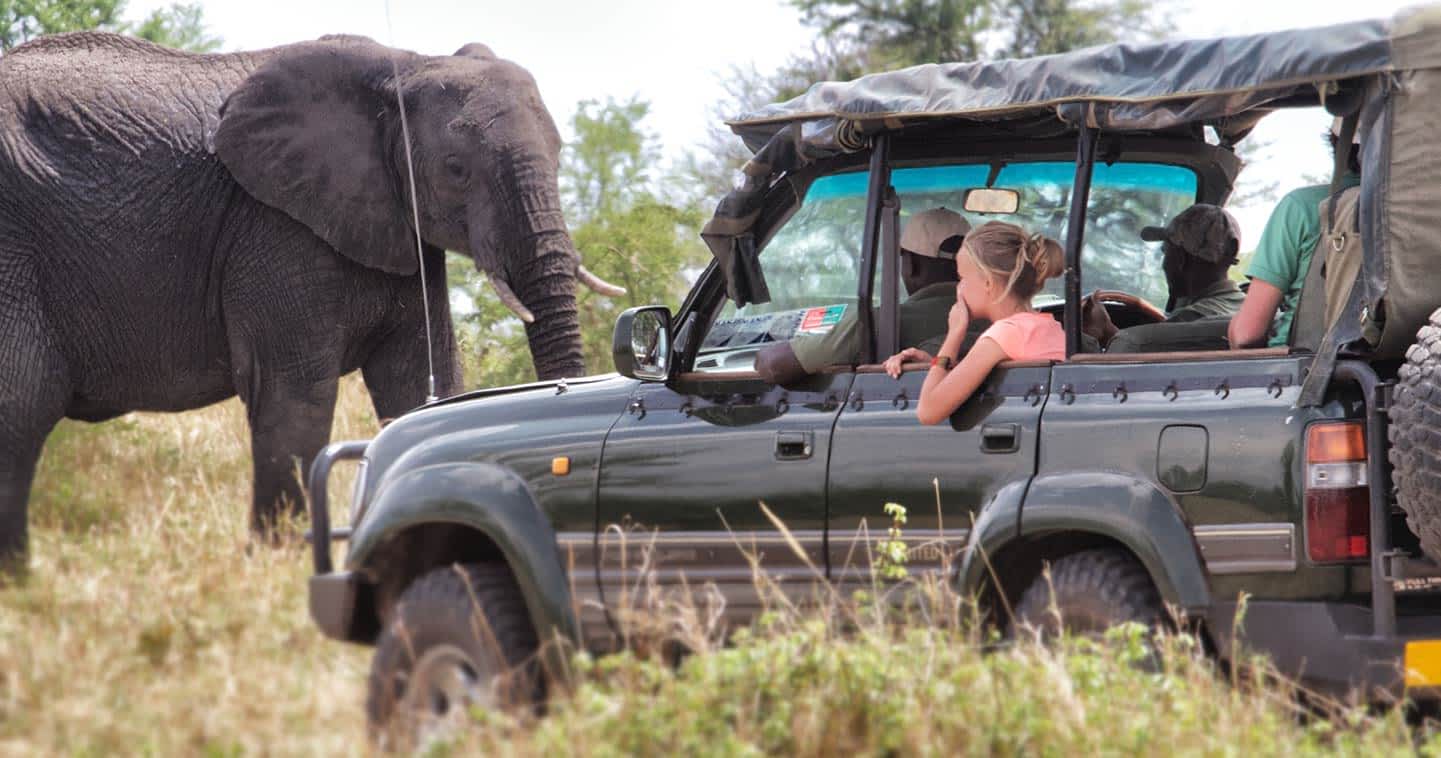
At the heart of the park’s fame are the Big Five — lion, leopard, elephant, buffalo, and rhino. Serengeti National Park is one of the best places on the continent to spot these iconic species. Lions are especially prolific here, with an estimated population of over 3,000. Watching a pride laze under a tree or coordinate a hunt in the open plains is one of the defining moments of any Serengeti safari.
Leopards are more elusive, often found lounging in the sausage trees of the Seronera region. Their spotted coats blend seamlessly into the dappled light, making sightings both thrilling and rare. Elephants, majestic and intelligent, roam freely in family groups, especially in the northern and western regions of Serengeti National Park. Buffalo herds are often encountered in large numbers, particularly around water sources, while rhinos are found mainly in protected zones and are rarely seen, making any encounter deeply special.
Beyond the Big Five, Serengeti National Park supports some of the best predator concentrations in Africa. Cheetahs thrive in the short grass plains of the southern Serengeti, where their speed and agility allow them to hunt in open terrain. Hyenas, both spotted and striped, are ever-present, known for their haunting calls at night and highly complex social structures. Jackals, servals, bat-eared foxes, and other smaller carnivores also roam the landscape, each playing its part in the park’s ecological balance.
Perhaps the most astonishing wildlife feature of Serengeti National Park is the Great Migration. Over 1.5 million wildebeest, along with hundreds of thousands of zebras and gazelles, move in a constant loop in search of fresh pasture. This spectacle not only draws global attention but also supports a predator population that follows the herds throughout the year. Crocodiles lie in wait in the Grumeti and Mara Rivers, creating the dramatic scenes of river crossings that define the migration experience in Serengeti National Park.
For bird lovers, Serengeti National Park offers an extraordinary avian paradise. From the towering ostrich — the world’s largest bird — to colorful lilac-breasted rollers, secretary birds, vultures, eagles, storks, and flamingos near seasonal lakes, the variety is staggering. Whether you’re a seasoned birder or a casual observer, you will be amazed by the vibrancy and diversity of birdlife here.
Other notable species include giraffes elegantly walking the plains, warthogs trotting with tails held high, impalas leaping through the bush, and hippos crowding riverbanks in grunting pods. Rare species like the caracal, aardvark, and pangolin also exist within Serengeti National Park, although they are more elusive and typically nocturnal.
Every game drive through Serengeti National Park offers something unique. One day may bring you nose-to-trunk with an elephant herd, while the next might reveal a cheetah sprinting across the plains. It’s this unpredictable and unfiltered immersion into nature that makes Serengeti National Park not only a wildlife destination — but one of the greatest natural theaters on Earth.
The Great Migration in Serengeti National Park
What is the Great Migration?
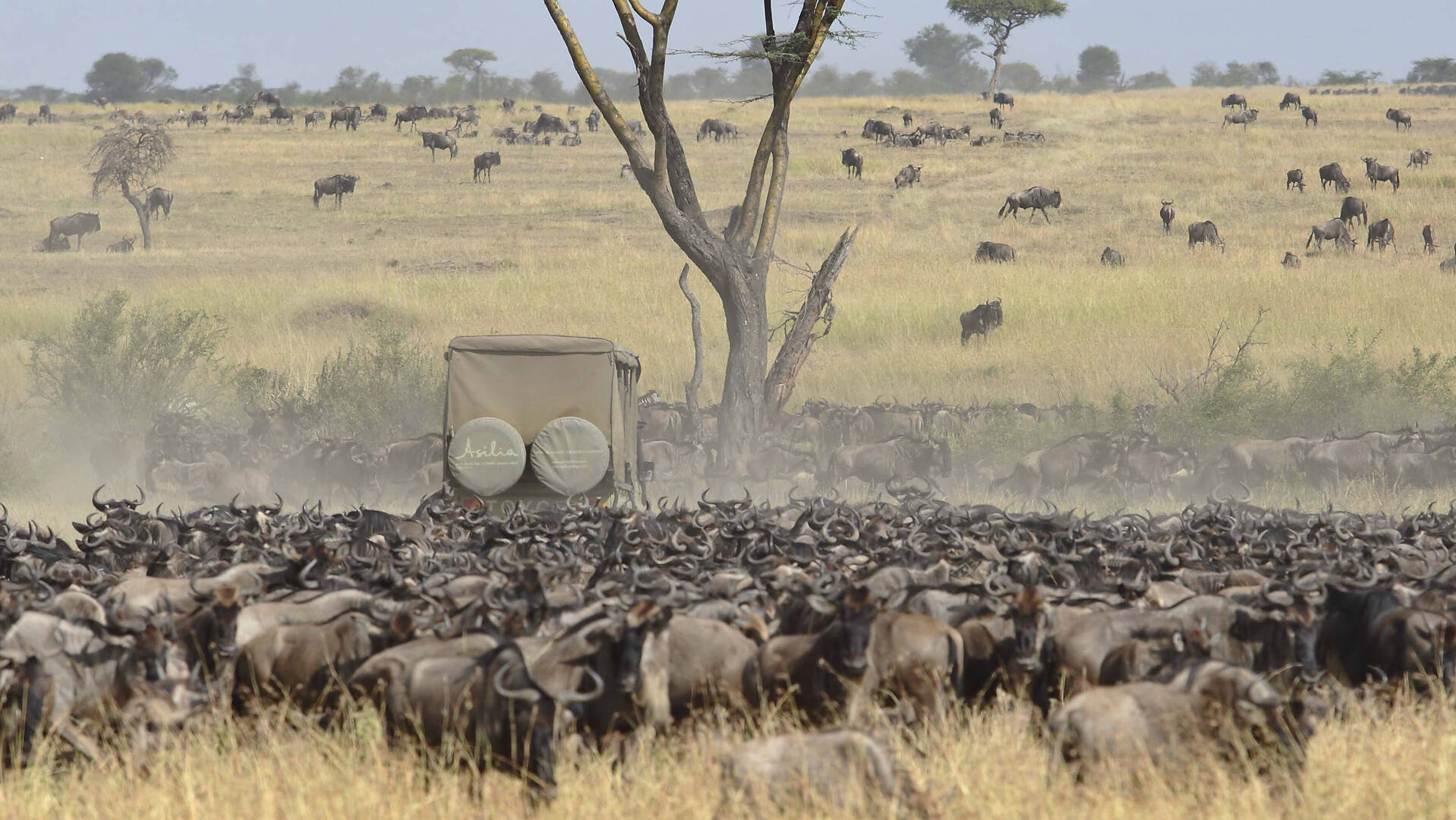
The Great Migration in Serengeti National Park is one of the most extraordinary wildlife spectacles in the world. This natural event involves the seasonal movement of over 1.5 million wildebeest, accompanied by hundreds of thousands of zebras and gazelles, across the vast plains of Serengeti National Park in Tanzania and into Kenya’s Masai Mara. Known as the largest terrestrial mammal migration on Earth, the Great Migration defines the very heartbeat of the Serengeti ecosystem.
Each year, the animals follow a predictable but perilous circular route driven by rainfall patterns and the search for fresh grazing. Along the way, they must navigate predator-filled savannahs, fast-flowing rivers teeming with crocodiles, and extreme weather conditions. Witnessing the Great Migration in Serengeti National Park is not only breathtaking, but a profound experience of nature in its rawest form.
Migration Calendar: Where to See the Great Migration Month-by-Month
The Great Migration in Serengeti National Park moves in a continuous clockwise loop. Below is a general timeline of the migration to help you plan when and where to go;
| Month | Migration Location in Serengeti National Park |
|---|---|
| January – March | Southern Serengeti (Ndutu area) – calving season, high predator activity |
| April – May | Central Serengeti – herds begin moving north, fewer tourists, lush landscapes |
| June – July | Western Corridor – Grumeti River crossings, intense predator-prey drama |
| August – October | Northern Serengeti – dramatic Mara River crossings, best for photographers |
| November – December | Return to Southern Serengeti – scattered herds reunite for calving |
This movement is why Serengeti National Park remains a year-round destination for wildlife lovers. Whether you’re visiting for river crossings, calving season, or large herd gatherings, the Great Migration ensures something spectacular is always happening.
Where to See the Great Migration in Serengeti National Park
- Southern Serengeti (Ndutu area) is best from January to March. This is where wildebeest calves are born — over 500,000 in just a few weeks. It’s also when predators are most active, making it ideal for witnessing lion and cheetah hunts.
- Western Corridor (Grumeti region) becomes the stage in June and early July, as the herds gather and attempt the Grumeti River crossing, often facing lurking Nile crocodiles.
- Northern Serengeti steals the spotlight from July to October, as herds battle the mighty Mara River. The river crossings here are the most dramatic and photographed moments of the Great Migration in Serengeti National Park.
River Crossings in Serengeti National Park
River crossings are the most thrilling episodes of the Great Migration in Serengeti National Park. When thousands of wildebeest throw themselves into crocodile-infested waters, the chaos and survival instinct create some of nature’s most unforgettable scenes. These crossings are not on a strict schedule, which adds to the anticipation. You might wait hours for the herds to decide, and then suddenly, the banks erupt with movement.
The Mara River crossings in the Northern Serengeti are particularly famous and usually occur between July and October. Meanwhile, the Grumeti River crossings in the Western Corridor offer quieter but equally intense action around June and early July.
Best Time to See the Great Migration in Serengeti National Park
There is no single “best time” — it depends on what part of the migration you want to see:
- January to March: Best for calving season and predator sightings in Southern Serengeti
- June to July: Best for Grumeti River crossings and fewer crowds
- August to October: Best for Mara River crossings in Northern Serengeti
- November to December: Scattered herds return south, fewer tourists, green scenery
Planning your safari based on the migration calendar allows you to be in the right place at the right time. That’s why choosing an experienced tour operator who understands the movement within Serengeti National Park is essential.
Why the Great Migration Makes Serengeti National Park Unmissable
The Great Migration is more than a highlight of Serengeti National Park — it is the pulse that sustains its ecosystem. Predators depend on the herds for survival. The grasslands rejuvenate after each passage. Travelers who witness this marvel are not just watching wildlife — they’re part of one of Earth’s last great natural rhythms.
Whether it’s the tension of a river crossing, the wonder of a newborn calf standing for the first time, or the sheer scale of the moving herds stretching to the horizon, the Great Migration in Serengeti National Park will leave you forever changed.
Best Time to Visit Serengeti National Park

One of the most common questions from travelers planning a safari to Serengeti National Park is: When is the best time to visit? The truth is, Serengeti National Park is a year-round safari destination. Thanks to its vast size and seasonal variation across regions, wildlife experiences can be enjoyed in every month of the year — but the best time to visit depends on what you want to see.
Serengeti’s climate is generally warm and dry, with daytime temperatures ranging from 20°C to 30°C (68°F to 86°F), and its ecosystem supports impressive wildlife throughout the year. However, two main factors influence the best time to visit Serengeti National Park: the Great Migration and the wet and dry seasons.
Dry Season (June to October) – Best for Game Viewing
The dry season, which runs from June to October, is considered the best time to visit Serengeti National Park for general wildlife viewing. During this time, the vegetation is sparse, water sources are limited, and animals congregate around rivers and watering holes, making them easier to spot.
This is also the peak time for witnessing the Great Migration river crossings in the Western Corridor (June–July) and Northern Serengeti (August–October), where wildebeest and zebras face dramatic crossings of the Grumeti and Mara Rivers. Predator activity is intense, and photography conditions are ideal with clear skies and golden light.
Because it’s the dry season, roads are easier to navigate, and there are fewer insects, making it the best time for first-time visitors to Serengeti National Park.
Green Season (November to May) – Lush Landscapes and Calving Season
The green season, from November through May, brings short and long rains to the plains. This period transforms Serengeti National Park into a lush, emerald paradise with dramatic skies, blooming wildflowers, and vibrant birdlife.
While the green season is less popular due to rain, it is still one of the best times to visit Serengeti National Park for unique experiences like:
- Calving season (late January to early March) in the Southern Serengeti, where thousands of wildebeest give birth daily. This attracts predators like lions, hyenas, and cheetahs in high numbers.
- Excellent photographic opportunities due to the green backdrop and dramatic cloud formations.
- Fewer tourists, which means lower lodge rates and more exclusive wildlife encounters.
It’s important to note that while some rains fall during this time, they are usually short-lived afternoon showers and rarely disrupt game drives significantly.
Month-by-Month Snapshot of When to Visit Serengeti National Park
| Month | Wildlife & Safari Highlights in Serengeti National Park |
|---|---|
| January – March | Calving season in Southern Serengeti, intense predator action |
| April – May | Green landscapes, fewer crowds, low season safari rates |
| June – July | Dry season begins, Grumeti River crossings in the West |
| August – October | Prime time for Mara River crossings in Northern Serengeti |
| November – December | Short rains, herds return south, excellent birding and greenery |
When Should You Visit Serengeti National Park?
The best time to visit Serengeti National Park depends on your safari goals:
- For the Great Migration: June to October (river crossings) or January to March (calving)
- For photography: Green season (December to May) offers dramatic contrast and skies
- For fewer crowds: April, May, and November
- For birdwatching: November to April, when migratory birds are present
- For families and first-timers: June to October offers clear weather and high wildlife density
With different wildlife concentrations across seasons and regions, Serengeti National Park offers something special no matter when you travel. This is why the park is considered a world-class safari destination all year round.
Serengeti Safari Types | Group, Luxury, and Budget Tours
One of the biggest advantages of visiting Serengeti National Park is the wide range of safari types available to suit every kind of traveler. Whether you’re a solo backpacker seeking affordable overland tours, a couple planning a luxurious honeymoon, or a family looking for a private safari experience, Serengeti National Park offers flexible tour styles that match your expectations, comfort level, and budget.

Understanding the differences between group safaris, luxury safaris, and budget tours helps you choose the best way to explore Serengeti National Park without compromising your goals. Each safari type delivers a different experience — but all immerse you in the unforgettable wildlife and landscapes of Tanzania’s most famous park.
Group Safaris in Serengeti National Park
Group safaris are a popular and cost-effective way to visit Serengeti National Park, especially for solo travelers or couples who don’t mind sharing the adventure with others. On a group safari, you join a scheduled departure with other travelers, typically in a 4×4 safari vehicle with a guide and a maximum of 6–7 people.
These tours are great for meeting like-minded adventurers while keeping your budget manageable. Group safaris often follow pre-set itineraries and offer standard accommodations such as public campsites or midrange lodges.
Group joining tours to Serengeti National Park usually include:
- Transportation from Arusha or Moshi
- A professional safari guide/driver
- Shared park entry and camping fees
- Meals and basic amenities
If you’re looking to explore Serengeti National Park affordably while still enjoying guided wildlife experiences, group safaris offer excellent value.
Luxury Safaris in Serengeti National Park
For travelers seeking an exclusive, private, and high-comfort safari experience, luxury safaris in Serengeti National Park are unmatched. These safaris include fly-in options directly to airstrips within the park, with minimal transfers and maximum time in the bush.
Guests on a luxury Serengeti safari stay in upscale lodges, tented camps, or private villas with en-suite bathrooms, gourmet dining, personal butlers, and often even hot air balloon rides over the plains. Each day includes customized game drives with expert naturalist guides and flexible schedules.
Luxury tours in Serengeti National Park often include:
- Fly-in access via Seronera or Kogatende airstrips
- Private guides and 4×4 vehicles
- Champagne bush breakfasts and sunset sundowners
- Exclusive access to private concessions or remote migration hotspots
Luxury travel in Serengeti National Park offers more than just comfort — it delivers solitude, deep wildlife immersion, and personalized service in some of the most breathtaking corners of Tanzania.
Budget Serengeti Safari Tours
A budget safari to Serengeti National Park doesn’t mean missing out on the action. In fact, many travelers on a budget enjoy the raw, authentic feel of camping safaris where the sounds of the wilderness surround your tent at night.
Budget safaris typically use dome tents in public campsites within or near Serengeti National Park. Meals are prepared by a camp chef, and travelers help set up or participate in group activities. These tours often combine multiple parks — such as Ngorongoro Crater, Tarangire, and Lake Manyara — in one overland journey from Arusha.
Budget tours to Serengeti National Park are best for:
- Backpackers and students
- Adventure seekers who enjoy rustic travel
- Travelers who want more days in the park at a lower cost
These safaris offer unbeatable access to wildlife at a fraction of the price of luxury travel, while still maintaining safety, professional guiding, and unforgettable encounters.
Which Safari Type Is Best for You?
The best way to explore Serengeti National Park depends on your personal travel style:
- Choose group safaris if you want affordability, a social atmosphere, and a scheduled itinerary.
- Choose luxury safaris if you value comfort, privacy, and exclusive access to wildlife areas.
- Choose budget safaris if you’re adventurous, cost-conscious, and open to authentic camping.
No matter which safari type you choose, the magic of Serengeti National Park remains the same — thrilling game drives, stunning sunsets, and a front-row seat to nature’s greatest show.
Top Serengeti Safari Itineraries
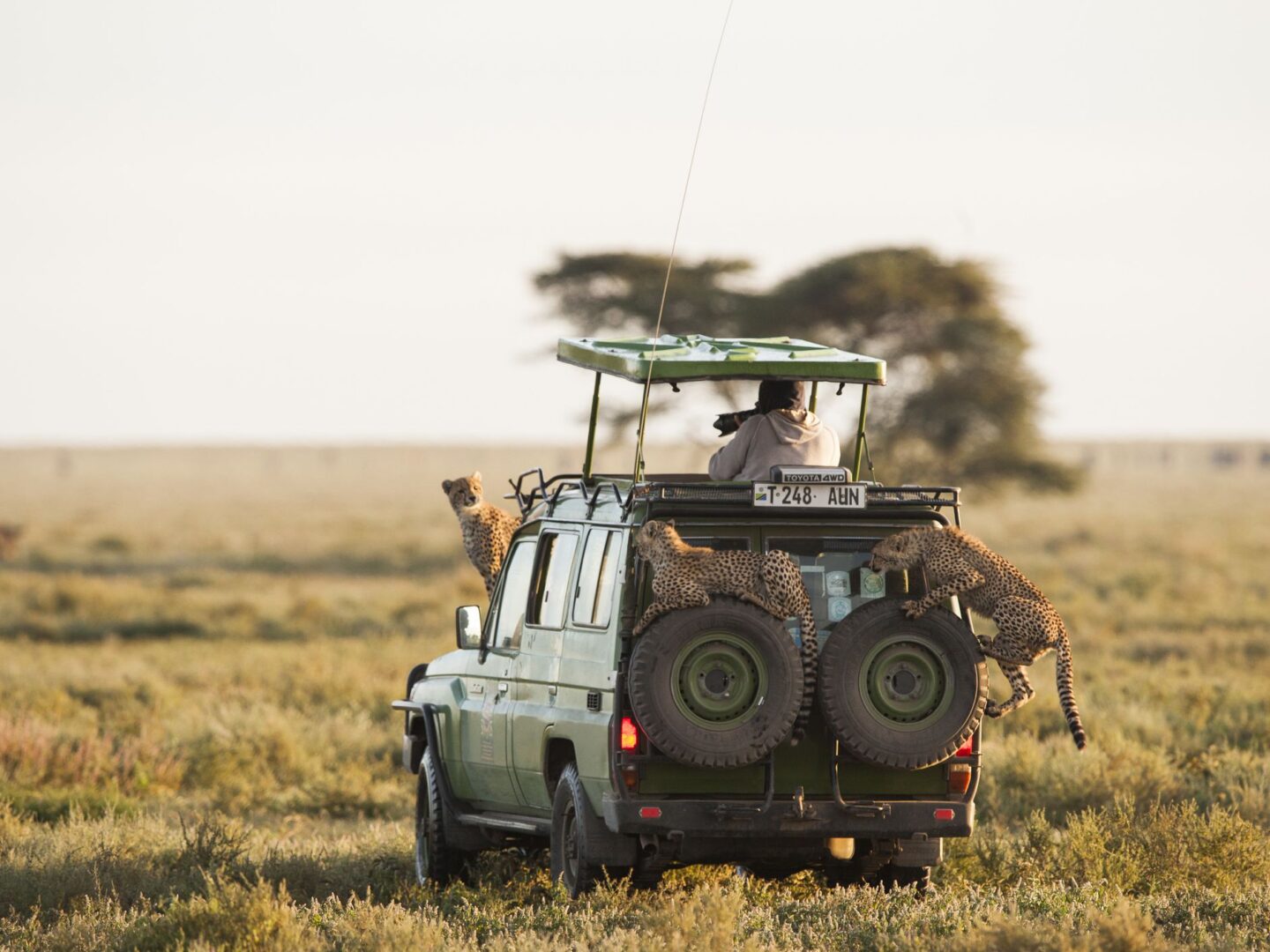
Planning the perfect safari to Serengeti National Park starts with choosing the right itinerary. Whether you have just a few days or two full weeks, the park offers endless possibilities for unforgettable wildlife adventures. From short fly-in safaris to extended overland journeys that combine multiple national parks, every Serengeti itinerary brings you face-to-face with the wild in a different way.
Below are some of the most popular Serengeti National Park safari itineraries, carefully curated to match different travel styles, budgets, and seasonal highlights — including the Great Migration. Each itinerary can be customized with Nextgen Safaris to meet your specific travel goals.
3 Days Serengeti Fly-in Safari
This fast-paced itinerary is ideal for travelers short on time who still want to experience the core wildlife areas of Serengeti National Park. Guests fly directly from Arusha to the Seronera airstrip, enjoy two days of game drives, and return by air. Perfect for business travelers, honeymooners, or anyone combining Serengeti with Zanzibar or Kilimanjaro.
→ Request the 3 Days Serengeti Fly-in Safari
4 Days Serengeti and Ngorongoro Safari
Combining the iconic plains of Serengeti National Park with the breathtaking Ngorongoro Crater, this itinerary offers a rich blend of landscapes and wildlife. Travelers enjoy a seamless safari circuit starting from Arusha, driving through the Great Rift Valley, and staying in midrange lodges or luxury camps.
→ Request for 4 Days Serengeti and Ngorongoro Safari
5 Days Big Five Tanzania Safari
A classic itinerary designed to deliver close encounters with Africa’s most famous wildlife. Starting from Tarangire, this journey continues to the Ngorongoro Highlands and ends with two thrilling days in Serengeti National Park, offering maximum chances to spot lions, elephants, leopards, rhinos, and buffalo.
→ Request 5 Days Tanzania Big Five Safari Details
7 Days Serengeti Migration Safari
Tailored for migration chasers, this itinerary follows the wildebeest herds through the Southern, Central, Western, or Northern Serengeti, depending on the time of year. Each route is crafted around the best spots for witnessing river crossings or calving, making it ideal for wildlife photographers and repeat safari-goers.
→ Request 7 Days Serengeti Migration Safari
10 Days Northern Tanzania Circuit Safari
This immersive journey explores the full sweep of the Northern Tanzania safari circuit — including Serengeti National Park, Tarangire, Lake Manyara, and Ngorongoro. Perfect for families or small groups, the trip balances diverse habitats, cultural experiences, and game-rich areas.
→ Request 10 Days Tanzania Safari
12 Days Tanzania Safari and Zanzibar Beach Combo
Combining the wildlife wonders of Serengeti National Park with the tropical shores of Zanzibar, this itinerary is perfect for honeymooners or anyone looking to blend adventure with relaxation. After days of thrilling game drives, unwind on white-sand beaches with crystal-clear Indian Ocean views.
→ Request 12 Days Safari & Zanzibar Package
14 Days Great Migration and Cultural Safari
For those who want it all — the Great Migration in Serengeti National Park, cultural visits with the Maasai, immersive experiences in Tarangire and Lake Eyasi, and plenty of photography time — this itinerary is the ultimate two-week safari.
→ Request for 14 Days Serengeti Migration & Culture Safari
Custom Serengeti Safaris with Nextgen
If you’re planning a honeymoon, family trip, group tour, or photography expedition, we design fully tailored Serengeti National Park safaris based on your needs, dates, and travel goals. You’ll benefit from local insight, personalized logistics, and access to both public and private wildlife areas.
→ Contact Us to Build Your Custom Serengeti Safari
Serengeti National Park Accommodation Options
Choosing where to stay in Serengeti National Park is one of the most exciting parts of planning your safari — and one of the most important. With hundreds of options ranging from basic public campsites to ultra-luxurious tented lodges, Serengeti National Park offers something for every traveler’s style and budget. The type of accommodation you choose will influence your overall experience, your access to key wildlife areas, and your comfort during early game drives or late-night stargazing.
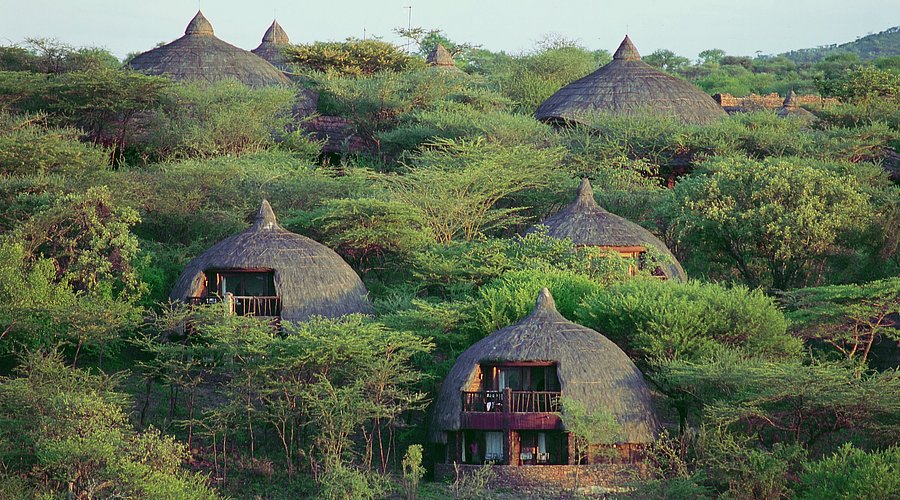
Because Serengeti National Park is so vast, accommodations are spread across several regions — each offering unique landscapes, wildlife concentrations, and seasonal migration activity. The park is generally divided into Central Serengeti (Seronera), Western Corridor, Southern Serengeti, and Northern Serengeti — and where you stay often depends on the time of year and what you want to see.
Central Serengeti (Seronera) – Year-Round Game Viewing
The Central Serengeti, especially the Seronera Valley, is one of the most wildlife-rich areas in all of Serengeti National Park. With permanent water sources, this region supports resident big cats, elephants, giraffes, and a high number of hyenas year-round. Seronera is ideal for first-time safari travelers or those who want consistent sightings.
Accommodation options in this region range from:
- Public and special campsites (for budget safaris)
- Midrange tented camps with en-suite bathrooms
- Luxury lodges with panoramic views, fine dining, and spa services
Staying in the Central Serengeti allows you to explore multiple directions within the park and enjoy game drives with relatively short travel times between sightings.
Northern Serengeti – Mara River Crossings and Seclusion
The Northern Serengeti is the best place to witness the Mara River crossings during the Great Migration from July to October. It’s also one of the most remote and exclusive areas of Serengeti National Park, with far fewer crowds and a deep sense of wilderness.
Lodges and camps in the north are generally high-end and include:
- Seasonal tented camps positioned along the Mara River
- Luxury eco-lodges with private verandas and plunge pools
- Fly-in only camps for exclusive access
This region is perfect for travelers focused on photography, migration tracking, or honeymoon-style seclusion in Serengeti National Park.
Western Corridor – Grumeti River and Remote Game Drives
The Western Corridor is known for its lush riverine forests and the Grumeti River, where dramatic river crossings happen around June and July. Wildlife sightings are excellent, but the area is quieter than Central Serengeti — ideal for those seeking off-the-beaten-path experiences.
Accommodation options in this area include:
- Upmarket mobile camps
- Private concessions (such as Singita Grumeti)
- Permanent luxury lodges overlooking the river
Because of its remoteness, the Western Serengeti is typically accessed by air or as part of a longer overland itinerary.
Southern Serengeti – Calving Season and Open Plains
From December to March, the Southern Serengeti — especially around Ndutu and the Kusini plains — becomes the stage for calving season, when hundreds of thousands of wildebeest give birth. This attracts predators in large numbers, offering intense game viewing in wide, open plains.
Accommodations here include:
- Seasonal mobile camps set up specifically for calving season
- Midrange tented camps with canvas walls and great mobility
- Budget-friendly camping near Lake Ndutu in conservation areas
This area of Serengeti National Park is perfect for those chasing dramatic wildlife behavior and traveling during Tanzania’s green season.
Budget, Midrange, and Luxury Accommodation in Serengeti National Park
To help travelers make an informed choice, here’s a general guide to what each category of accommodation includes;
| Category | Features |
|---|---|
| Budget | Dome tents, shared bathrooms, basic meals, public campsites |
| Midrange | Permanent tented camps, en-suite bathrooms, standard service |
| Luxury | Spacious suites/tents, private decks, gourmet cuisine, personalized service, airstrip transfers |
Most lodges and camps in Serengeti National Park are eco-friendly and designed to blend into the landscape. Some are seasonal and move with the migration, while others are year-round establishments in key game-viewing areas.
Booking the Right Accommodation in Serengeti National Park
The right place to stay in Serengeti National Park depends on your travel dates, budget, and personal preferences. For the Great Migration, it’s essential to book well in advance and choose a camp that follows the herds. For green season safaris, you may find better value and more availability, even at luxury lodges.
At Nextgen Safaris, we help you choose the best lodge or camp based on your itinerary, wildlife goals, and overall expectations — ensuring your experience in Serengeti National Park is seamless, comfortable, and unforgettable.
How to Get to Serengeti National Park
Getting to Serengeti National Park is part of the adventure — and there are several ways to reach this iconic destination, depending on your budget, travel time, and the style of safari you’ve booked. Because Serengeti National Park is located in a remote part of northern Tanzania, access requires planning, but with the right route, you can get there comfortably by either road or air.
By Air: Flying to Serengeti National Park
Flying is the fastest and most convenient way to reach Serengeti National Park, especially for those with limited time or who prefer to skip long drives. Several domestic flights connect major cities and airports in Tanzania directly to airstrips inside the park.
Most travelers begin their journey by flying into:
- Kilimanjaro International Airport (JRO) – near Arusha, with international connections
- Julius Nyerere International Airport (DAR) – in Dar es Salaam, for southern and coastal arrivals
- Zanzibar International Airport (ZNZ) – for beach-and-bush combinations
From these airports, you can take a domestic flight with regional carriers (like Coastal Aviation or Auric Air) to one of the airstrips within Serengeti National Park, including;
| Airstrip | Region of Serengeti |
|---|---|
| Seronera Airstrip | Central Serengeti |
| Kogatende Airstrip | Northern Serengeti |
| Ndutu Airstrip | Southern Serengeti (seasonal) |
| Grumeti Airstrip | Western Corridor |
| Kusini Airstrip | Southern/remote plains |
These bush flights typically take between 1–2 hours from Arusha and offer breathtaking aerial views of the plains below. Fly-in safaris are popular for luxury travelers and anyone looking to maximize time inside the park.
By Road: Driving to Serengeti National Park
Travelers looking for a more immersive and budget-friendly journey can reach Serengeti National Park by road. Most overland safaris start from Arusha, the safari capital of northern Tanzania, located approximately 335 km (8 hours by road) from the park’s main gates.
Popular road routes into Serengeti National Park include:
- Arusha → Ngorongoro → Naabi Hill Gate (most common)
- Arusha → Lake Manyara → Serengeti (via Karatu and Ngorongoro)
- Arusha → Tarangire → Serengeti (ideal for full northern circuit tours)
The drive is long but scenic, offering cultural stops, Rift Valley views, and wildlife sightings even before you enter the park. Most itineraries include an overnight in Ngorongoro Crater or Karatu to break up the journey.
Road vs. Fly-In: Which Is Better?
Both road and fly-in options have benefits:
- Fly-in safaris are best for luxury travelers, honeymooners, or those combining Serengeti with Zanzibar, Kilimanjaro, or Ruaha.
- Road safaris are better for adventurers, families, or travelers on midrange and budget tours, especially those doing the full northern circuit.
If time is short, flying directly into Serengeti National Park gets you into the action quickly. But if you enjoy road trips and want to visit Tarangire, Lake Manyara, and Ngorongoro Crater along the way, a guided road safari offers incredible value.
Entry Gates and Airstrips in Serengeti National Park
There are multiple entry gates and airstrips depending on your safari route:
- Naabi Hill Gate – main entrance from Ngorongoro side
- Ndabaka Gate – western entrance near Mwanza
- Klein’s Gate – northeastern entrance from Loliondo
- Bologonya Gate – near the Kenya border (rarely used)
Each gate is connected to ranger stations and park offices, where permits are checked. Your tour operator will handle all logistics and paperwork to ensure smooth entry into Serengeti National Park.
No matter how you get to Serengeti National Park, the moment you arrive, the journey becomes part of the story. Whether landing on a dusty airstrip or watching giraffes cross the dirt road ahead of your safari vehicle, your arrival in Serengeti marks the beginning of something extraordinary.
Costs & Safari Prices in Serengeti National Park
One of the most important questions travelers ask before planning a trip to Serengeti National Park is: How much does a Serengeti safari cost? The answer depends on several factors — including the type of safari you choose, the season you travel, the length of your itinerary, and the level of accommodation.
Serengeti National Park safari prices range widely, from affordable group tours for backpackers to ultra-luxurious fly-in safaris with private guides and five-star tented lodges. Knowing what to expect in terms of pricing can help you plan your budget and select the best experience for your style of travel.
Factors That Affect Serengeti Safari Costs
Several variables influence the cost of a Serengeti National Park safari, including:
- Accommodation level: Budget camping, midrange tented camps, or luxury lodges
- Safari duration: Short 3-day safaris cost less than extended 10- or 14-day tours
- Private vs. group: Private safaris are more expensive than group joining tours
- Transportation: Fly-in safaris are quicker but cost more than road safaris
- Season: Peak season (June–October) is more expensive than the low season (April–May)
- Park fees: Entrance and concession fees for Serengeti National Park are fixed daily charges
Entrance Fees for Serengeti National Park (Foreign Travelers)
As of the current TANAPA (Tanzania National Parks Authority) rates:
| Category | Daily Park Fee (USD) |
|---|---|
| Foreign adult (16+ years) | $70 + 18% VAT = $82.60 |
| Foreign child (5–15 years) | $20 + 18% VAT = $23.60 |
| Children under 5 | Free |
| Camping fee (public sites) | $30 + VAT (if self-camping) |
| Vehicle entry (included in tour packages) | Varies |
These fees are charged per 24 hours in the park and are included in most pre-packaged safaris.
Average Cost of Serengeti Safaris by Type
Here’s a general breakdown of Serengeti safari costs based on the most common safari styles;
| Safari Type | Approx. Price per Person (USD) | What’s Included |
|---|---|---|
| Budget Group Safari (4–6 days) | $850 – $1,200 | Camping, shared vehicle, group guide, park fees, meals |
| Midrange Lodge Safari (5–7 days) | $1,500 – $2,800 | Tented camp or lodge, private guide, meals, transfers, fees |
| Luxury Fly-In Safari (3–6 days) | $3,000 – $7,000+ | Charter flight, luxury lodge, private vehicle, gourmet meals |
Note: Prices vary depending on travel dates, availability, and customization.
Additional Costs to Consider
Even when booking a package, there may be optional extra costs in Serengeti National Park, such as:
- Hot air balloon safari: $550–$650 per person
- Tipping for guides and camp staff: $10–$20 per person, per day
- Souvenirs and shopping
- Drinks at lodges (sometimes excluded from basic packages)
- Visas and international flights
Always confirm what is included in your package when booking your Serengeti National Park safari.
Is a Serengeti Safari Worth the Cost?
Absolutely. The value of visiting Serengeti National Park goes far beyond numbers. For your investment, you gain access to one of the greatest natural wonders on Earth, where you’ll witness the Great Migration, spot the Big Five, and explore pristine landscapes untouched by mass tourism.
Whether you choose a budget camping safari or a luxury lodge experience, the memories you make in Serengeti National Park will last a lifetime.
At Nextgen Safaris, we provide flexible pricing, transparent quotes, and personalized itineraries. Whether you’re planning your first trip or returning for the Great Migration, we make sure every dollar of your Serengeti National Park safari goes toward an unforgettable, well-organized experience.
Serengeti National Park vs Masai Mara | Which Safari Destination Is Better?
When planning an East African safari, one of the most common comparisons travelers make is Serengeti National Park vs Masai Mara. Both destinations are world-renowned, deeply connected ecologically, and home to some of the most dramatic wildlife encounters on Earth — particularly the Great Migration. But while they share similarities, each offers unique safari experiences depending on your travel goals, preferences, and timing.
This guide explores the differences between Serengeti National Park in Tanzania and Masai Mara National Reserve in Kenya, helping you decide which safari destination is better for your next African adventure.
Location and Size
Serengeti National Park is located in northern Tanzania and forms part of the larger Serengeti ecosystem, which spans approximately 30,000 square kilometers. It includes not only the Serengeti National Park itself but also surrounding areas like the Ngorongoro Conservation Area, Maswa Game Reserve, and Loliondo.
Masai Mara, by contrast, is located in southwestern Kenya, bordering the Serengeti. It covers around 1,510 square kilometers, making it significantly smaller but more concentrated.
Key Difference: Serengeti is much larger and offers more remote, less crowded areas. Masai Mara is smaller but denser, often providing quicker sightings.
Wildlife and the Great Migration

Both Serengeti National Park and Masai Mara are famous for their wildlife density and diversity. The Big Five — lion, leopard, elephant, rhino, and buffalo — can be spotted in both parks. However, Serengeti has more varied ecosystems and a greater number of resident species due to its larger size.
The Great Migration — the world’s largest overland mammal migration — is shared between both parks. Most of the migration takes place within Serengeti National Park throughout the year, with the herds moving into Masai Mara for a few months (usually July to October) to graze on the Kenyan side.
Key Difference: For most of the year, the Great Migration is within Serengeti National Park. Masai Mara is best during the peak river crossing season.
Scenery and Landscapes
Serengeti National Park is characterized by endless golden savannahs, dramatic granite kopjes, seasonal rivers, and remote valleys. Its sheer size offers a sense of true wilderness, where game drives can go hours without seeing another vehicle.
Masai Mara, while incredibly scenic, is more compact and flatter. It’s easier to spot animals here due to the shorter distances between sightings and fewer obstructions.
Key Difference: Serengeti offers more landscape diversity and longer game drives, while Masai Mara delivers quick, high-density wildlife viewing.
Safari Experience and Crowds
Masai Mara is known for its accessibility from Nairobi and affordability, which means it receives a higher number of daily visitors. During high season, particularly around the Mara River crossings, vehicle congestion can occur.
In Serengeti National Park, especially in areas like the Northern Serengeti, it’s possible to watch a river crossing or a lion hunt with only one or two other vehicles nearby. The Tanzanian side is generally quieter, especially for travelers seeking a more private experience.
Key Difference: Masai Mara is more crowded during high season. Serengeti offers more remote, exclusive safari options.
Lodging and Safari Styles
Both Serengeti National Park and Masai Mara offer a full range of accommodations — from budget-friendly camps to ultra-luxury lodges. However, Serengeti has more seasonal mobile camps that follow the migration, giving you front-row access to wildlife.
Masai Mara lodges tend to be closer to one another due to the smaller reserve size. Tanzania’s Serengeti provides greater flexibility in lodge selection based on the time of year and migration location.
Key Difference: Serengeti offers more mobile luxury camps that move with the herds. Masai Mara has more lodge-style options in a compact area.
Costs and Accessibility
Masai Mara safaris tend to be slightly more affordable, especially for shorter trips. Kenya’s infrastructure — including Nairobi’s international airport and domestic flight network — makes it easier to reach Masai Mara quickly. Serengeti National Park safaris, on the other hand, often involve a longer journey by road or more expensive fly-in options from Arusha or Kilimanjaro.
Key Difference: Masai Mara is more accessible and budget-friendly for short safaris. Serengeti is better for extended trips and multi-park tours.
Cultural Experiences
In both Tanzania and Kenya, the Maasai people live near the parks and offer cultural visits, village walks, and traditional performances. However, Tanzania’s Serengeti National Park is often paired with Ngorongoro Crater, Lake Eyasi, or Lake Natron, where visitors can meet Hadzabe bushmen and Datoga communities — offering a more diverse cultural extension.
Key Difference: Serengeti safaris often include richer cultural add-ons due to surrounding regions.
Summary Comparison Table
| Feature | Serengeti National Park | Masai Mara |
|---|---|---|
| Size | 14,750+ km² (part of 30,000 km² ecosystem) | 1,510 km² |
| Great Migration Timing | Year-round (calving, movement, crossings) | July to October (river crossings) |
| Crowd Levels | Quieter, more remote experiences | More vehicles, especially in peak months |
| Accessibility | Longer travel time or fly-in safari | Easier access from Nairobi |
| Safari Type | Mobile and lodge-based, flexible routes | Lodge-based, compact routes |
Serengeti or Masai Mara: Which Should You Choose?
- Choose Serengeti National Park if you want a longer, quieter, more immersive safari with greater regional diversity and access to the entire Great Migration.
- Choose Masai Mara if you’re short on time, want high-impact wildlife viewing in a compact area, or are beginning your journey from Kenya.
For many travelers, the ultimate choice is both — combining Serengeti National Park and Masai Mara into one cross-border safari that follows the migration, connects East Africa’s top parks, and delivers a complete wilderness journey.
Conservation and Responsible Travel in Serengeti National Park
Serengeti National Park is not only one of the greatest wildlife destinations on Earth — it is also a globally recognized conservation success story. As a UNESCO World Heritage Site, the park plays a critical role in preserving Tanzania’s ecological heritage, supporting local communities, and protecting endangered species. But this delicate balance can only be maintained through active conservation efforts and responsible tourism practices.
As the number of visitors to Serengeti National Park continues to grow, so does the importance of traveling consciously and supporting safari operators who prioritize sustainability and low-impact operations. At Nextgen Safaris, we are deeply committed to promoting ethical travel in Serengeti National Park while ensuring that guests enjoy unforgettable, yet environmentally and culturally respectful experiences.
Wildlife Conservation in Serengeti National Park
Serengeti National Park is home to over 1.5 million wildebeest, thousands of lions, and more than 500 bird species. Protecting this biodiversity requires constant work from rangers, researchers, and local communities. The park’s management — overseen by the Tanzania National Parks Authority (TANAPA) — implements a range of conservation measures including:
- Anti-poaching patrols to protect rhinos, elephants, and other vulnerable species
- Wildlife corridors and migration route protection, especially around the park’s boundaries
- Controlled tourism zones to prevent overuse of fragile habitats
- Scientific research in collaboration with global institutions to monitor ecosystems
By paying park fees and booking with licensed operators, travelers directly fund the continued protection of Serengeti National Park’s ecosystems.
Community Involvement and Eco-Tourism
Long-term success in conservation depends on involving the people who live around Serengeti National Park. Many communities, including the Maasai, Ikoma, and Kurya tribes, live adjacent to the park and are critical partners in preserving wildlife.
Community-driven tourism initiatives include:
- Employment opportunities for local guides, rangers, camp staff, and artisans
- Revenue-sharing programs where a portion of your safari fee supports schools, clinics, and infrastructure
- Cultural tourism programs that celebrate indigenous traditions while educating visitors
When you book a safari with Nextgen Safaris, we work closely with community-owned lodges, hire local staff, and integrate respectful cultural interactions into your experience — ensuring your visit supports the people who help protect the land.
Low-Impact Travel Practices in Serengeti National Park
Tourism can have negative consequences if not properly managed. That’s why responsible travel in Serengeti National Park includes small yet powerful actions that minimize environmental impact, such as:
- Staying on designated tracks during game drives to avoid damaging vegetation
- Limiting engine idling time to reduce emissions
- Using refillable water bottles and avoiding single-use plastics
- Choosing eco-certified lodges that use solar power, greywater recycling, and waste composting
At Nextgen Safaris, we encourage low-footprint travel through small-group tours, locally sourced meals, and camps that operate harmoniously with nature. We also educate travelers on the park’s rules and how to engage respectfully with both wildlife and communities.
Supporting Conservation Through Your Safari
Every safari booked to Serengeti National Park is an opportunity to support conservation — but only if you choose operators who reinvest in sustainability. By traveling with Nextgen Safaris, you contribute to:
- Wildlife monitoring and anti-poaching patrols
- Education programs for local youth
- Sustainable employment opportunities
- Long-term ecological research
Your safari isn’t just a personal adventure — it’s part of a larger story of preserving Serengeti National Park for future generations. With every sunrise over the plains and every lion spotted through your binoculars, you become a steward of this incredible wilderness.
Tips for Your First Safari in Serengeti National Park
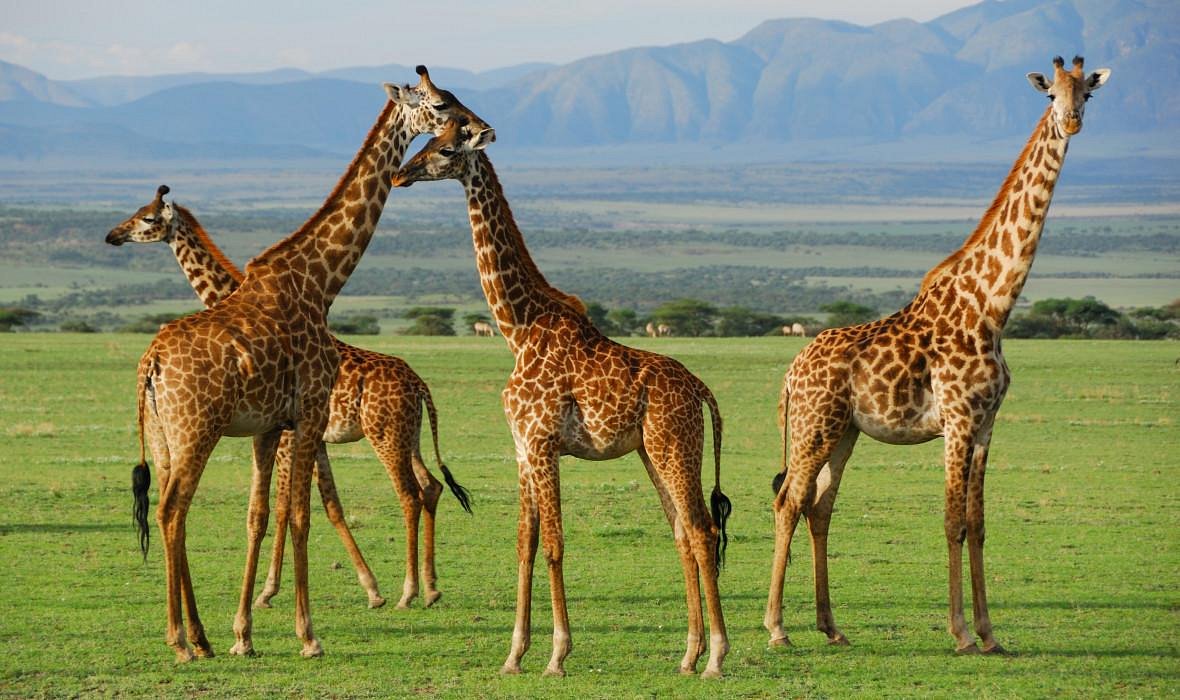
Embarking on your first safari in Serengeti National Park is an unforgettable experience. Whether you’re drawn by the drama of the Great Migration, the hope of spotting the Big Five, or the sheer wonder of being in one of the most iconic landscapes on Earth, proper planning and preparation can make all the difference. While the thrill of the unknown is part of the charm, knowing what to expect — and how to approach it — ensures that your adventure is safe, enjoyable, and rewarding.
Understand the Landscape and Wildlife Rhythms
Serengeti National Park is vast, covering more than 14,750 square kilometers of savannah, woodland, and river systems. It’s not a zoo or enclosed reserve, but a living, breathing ecosystem where animals roam freely. This means no two safaris are alike, and patience is key.
You might wait hours to see a lion, only for an entire pride to emerge around the next bend. Wildlife sightings depend on the season, the region you’re in, and sheer luck. The best approach is to enjoy the journey — the sunrise over the plains, the sounds of the bush, and the anticipation of what’s around the corner.
First-time visitors often expect instant action, but the real magic of Serengeti National Park lies in its rhythm — long quiet moments followed by sudden, breathtaking encounters.
Choose the Right Safari Duration and Timing
For your first visit, avoid trying to rush the experience. While short trips are possible, a minimum of 3 to 5 days in Serengeti National Park is recommended to give yourself enough time to explore different regions and witness diverse wildlife activity.
If your goal is to see the Great Migration, the timing of your trip is essential. Calving season takes place in the Southern Serengeti between January and March, offering dramatic predator-prey interactions. The famous Mara River crossings in the Northern Serengeti typically occur from July through October.
Even outside migration windows, Serengeti National Park offers spectacular resident wildlife — from big cats in Seronera to elephants and giraffes in the west. Knowing your travel goals will help your safari operator plan the right route and accommodations.
Prepare Mentally for the Safari Experience
Your first safari is not like a traditional vacation. Days start early, often with sunrise game drives, and involve long hours in a safari vehicle, sometimes bouncing along dirt roads. While this can be physically tiring, it’s also incredibly rewarding. Being mentally prepared to wake up before dawn, skip luxuries like air-conditioning or constant Wi-Fi, and embrace the wild is part of the authentic Serengeti National Park experience.
It helps to come with an open mind. You may not see a leopard on day one, but you might witness elephants playfully spraying water at sunset or hyenas calling through the night outside your tent. These smaller moments build into something unforgettable.
Pack Smart — Not Heavy
In Serengeti National Park, what you pack can greatly affect your comfort. Most safari vehicles and fly-in tours have strict luggage limits (especially soft bags), so prioritize essentials over volume.
Clothing should be neutral-colored (avoid white, red, or bright tones), breathable, and layered for cold mornings and hot afternoons. A wide-brim hat, sunglasses, and high-SPF sunscreen are non-negotiables. Closed shoes are better than sandals, especially if you plan to walk around camps or during cultural visits.
Binoculars and a good camera enhance the experience, but remember — the best safari memories often come from being present, not just from behind the lens. Keep electronics protected from dust, and carry a backup power bank.
Listen to Your Guide
Your safari guide is your most valuable asset. They know the park’s terrain, wildlife behavior, and how to ensure your safety. If your guide tells you to stay quiet, remain seated, or keep your distance, it’s for your protection — and for the animal’s wellbeing.
Guides in Serengeti National Park are professionally trained and deeply passionate about wildlife. The more you engage with them, ask questions, and show respect for the environment, the richer your experience becomes.
Many travelers say the connection they build with their guide is one of the most memorable parts of their safari.
Respect the Rules of the Park
It’s important to remember that Serengeti National Park is not a theme park. It’s a protected natural area with fragile ecosystems. Always stay inside your vehicle unless your guide tells you it’s safe to exit. Never feed animals, leave litter, or make loud noises that could disturb wildlife.
Wild animals are unpredictable, and even the most peaceful-looking elephant can become aggressive if provoked. Respecting boundaries — physical and ethical — ensures both your safety and the long-term health of the ecosystem.
Taking only photos and leaving only footprints is more than a saying here — it’s a commitment to responsible travel.
Don’t Obsess Over the Big Five
While the Big Five (lion, leopard, elephant, rhino, buffalo) are a major draw, focusing solely on ticking them off can cause you to miss the beauty around you. A safari in Serengeti National Park is about the entire ecosystem — the vivid birdlife, the behavior of gazelles, the interactions between species, and the grandeur of the landscape itself.
Seeing a dung beetle at work or watching a weaverbird build its nest can be just as fascinating as spotting a lion on the hunt. Your first safari is a chance to reconnect with nature at its most raw and real.
Stay Curious and Be Patient
The best safari guests are those who are curious, respectful, and patient. Your guide may stop to explain the behavior of an animal or track fresh prints in the sand. Take the time to learn, observe, and ask questions.
In Serengeti National Park, the more time you give the bush, the more it gives back. Don’t be in a rush to get to the next sighting. Often, the most magical moments happen when you least expect them.
Trust the Process
You’ve made it to one of the most legendary national parks in the world. Let go of control, follow nature’s lead, and trust your guide and itinerary. Even if you don’t see everything you hoped for, you’ll return from Serengeti National Park with stories, emotions, and insights that no other travel destination can provide.
Your first safari will not be your last — most travelers leave already planning to return.
FAQs About Serengeti National Park
What is Serengeti National Park famous for?
Serengeti National Park is world-famous for the Great Migration, an annual movement of over 1.5 million wildebeest, zebras, and gazelles across the plains of Tanzania and into Kenya. It is also one of the best places in Africa to see the Big Five — lion, leopard, elephant, buffalo, and rhinoceros — in their natural habitat. The park’s vast savannahs, dramatic river crossings, predator interactions, and iconic kopjes have made it a top safari destination for wildlife lovers, filmmakers, and photographers.
When is the best time to visit Serengeti National Park?
The best time to visit Serengeti National Park depends on what you want to see. For the calving season, when thousands of wildebeest give birth, visit between January and March in the Southern Serengeti. For Mara River crossings, which are the most dramatic scenes of the Great Migration, go between July and October in the Northern Serengeti. The dry season (June to October) offers the best overall game viewing, while the green season (November to May) features lush landscapes, fewer tourists, and excellent birding.
How much does a safari in Serengeti National Park cost?
Serengeti National Park safari costs vary widely depending on the style of travel. Budget camping safaris start from around $850–$1,200 per person for a 4–6 day group joining tour. Midrange lodge safaris range between $1,500–$2,800, while luxury fly-in safaris can exceed $3,000–$7,000 per person. Prices include park fees, accommodations, guides, transport, and meals. High season (July to October) usually costs more than the low season (April to May).
Where is Serengeti National Park located?
Serengeti National Park is located in northern Tanzania, bordering Kenya’s Masai Mara to the north and the Ngorongoro Conservation Area to the southeast. It is part of the larger Serengeti ecosystem, which spans approximately 30,000 square kilometers. The closest city is Arusha, from which most safaris depart by road or air. The park is easily accessible via regional airstrips like Seronera, Kogatende, and Ndutu.
How many days do you need in Serengeti National Park?
The ideal duration for a safari in Serengeti National Park is 3 to 6 days, depending on your interests and travel route. A 3-day fly-in safari is suitable for a quick wildlife immersion, while a 5 to 6-day itinerary allows exploration of multiple regions like the Central, Western, Northern, and Southern Serengeti. Many travelers combine Serengeti with other parks like Ngorongoro Crater or Tarangire National Park in a 7 to 10-day itinerary.
Can you see the Big Five in Serengeti National Park?
Yes, Serengeti National Park is one of the few places in the world where you can see all members of the Big Five. Lions and buffalo are common across the park, while elephants are frequently seen in the north and west. Leopards are often spotted in the Seronera region, though they’re elusive. Black rhinos are rare and found mostly in protected areas near Moru Kopjes, making sightings possible but uncommon.
What animals can you see in Serengeti National Park?
In addition to the Big Five, Serengeti National Park is home to:
- Cheetahs, hyenas, jackals, and wild cats
- Wildebeest, zebras, gazelles, elands, topis, and hartebeest
- Giraffes, hippos, crocodiles, warthogs, and mongoose
- Over 500 bird species, including ostriches, vultures, eagles, flamingos, and hornbills
Wildlife is abundant throughout the year, making Serengeti National Park one of the best places for consistent sightings and rare behaviors.
Is Serengeti better than Masai Mara?
Serengeti National Park and Masai Mara both offer outstanding safaris, but Serengeti is significantly larger and provides more varied landscapes, greater seclusion, and year-round migration access. The Mara River crossings happen in both parks, but most of the Great Migration takes place in Serengeti National Park. For longer trips and diverse ecosystems, Serengeti is often the better choice. Masai Mara, being smaller and closer to Nairobi, is ideal for quick safaris.
Is Serengeti National Park safe to visit?
Yes, Serengeti National Park is considered very safe for tourists. The park is heavily regulated by TANAPA and has a strong security presence. Your guide will ensure you follow wildlife safety protocols, such as staying inside the vehicle and keeping a safe distance from animals. Malaria precautions, personal travel insurance, and using registered tour operators like Nextgen Safaris will enhance your overall safety and peace of mind.
How do I book a safari to Serengeti National Park?
Booking a safari to Serengeti National Park can be done through trusted tour operators like Nextgen Safaris, who provide tailored itineraries, transport, guides, and accommodation. You can:
- Choose from set packages like 3-Day Serengeti Safari, 7-Day Great Migration Tour, or 10-Day Tanzania Circuit Safari
- Request a customized safari based on your interests (e.g., photography, family, luxury)
- Combine Serengeti with Ngorongoro Crater, Zanzibar, or Kenya’s Masai Mara
It’s best to book several months in advance, especially for migration season or luxury camps with limited availability.
Book Your Serengeti National Park Safari with Nextgen Safaris

You’ve explored the wildlife, understood the seasons, compared safari types, and learned how to travel responsibly — now it’s time to make it real. If you’re ready to experience the magic of Serengeti National Park, let Nextgen Safaris be your guide to one of the greatest wilderness areas on the planet.
We are a trusted local tour operator based in East Africa, specializing in private and group safaris to Serengeti National Park, Ngorongoro Crater, Tarangire, Lake Manyara, and beyond. Whether you’re looking for a budget-friendly adventure, a luxury honeymoon escape, or a custom-designed wildlife photography safari, we’ll craft your journey from the ground up — with care, local expertise, and personal passion.
Why Book Your Serengeti Safari with Nextgen Safaris?
- 100% Tailor-Made Safaris: Every itinerary is designed around your dates, budget, interests, and preferred style of travel.
- Local, On-the-Ground Experts: Our team lives and works in Tanzania — we know where the herds are, which camps offer the best value, and how to avoid the crowds.
- Responsible Tourism: We work closely with local communities, use eco-friendly lodges, and support wildlife conservation in Serengeti National Park.
- Seamless Travel: From airport pickup to park permits and meals, we handle every detail so you can relax and enjoy your safari.
- 24/7 Support: Our team is available before, during, and after your safari to ensure everything runs smoothly.
Whether you’re planning months in advance or searching for a last-minute Serengeti National Park safari, we’re ready to help you plan the safari of a lifetime.
Ready to Begin?
Contact us now to:
- Get a free customized itinerary
- Reserve your spot for the next Great Migration safari
- Ask questions about Serengeti National Park, park fees, logistics, or special requests
📩 Email: info@nextgensafaris.com
🌍 Website: www.nextgensafaris.com
📞 WhatsApp: +256 781 282344
Let’s bring your dream safari to life — because Serengeti National Park isn’t just a place you visit. It’s a place that stays with you forever.
Recent Posts
Last Minute Deals
Quick booking process
+49 1575 4711313






